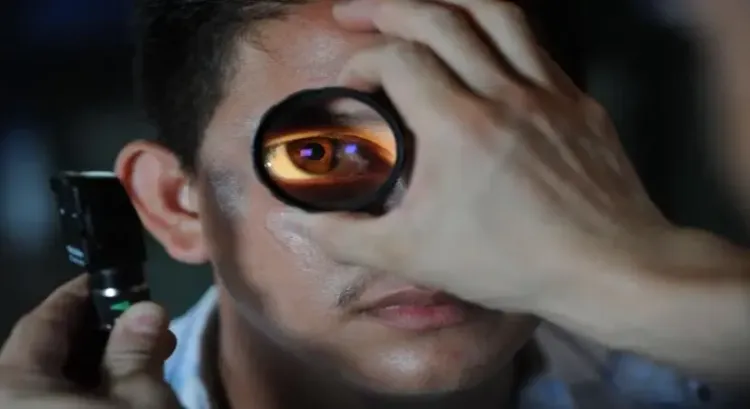Routine Eye Exams May Indicate Stroke Risk: Research

Synopsis
Key Takeaways
- Routine eye tests can predict stroke risk.
- Research led by CERA in Melbourne, Australia.
- Identified 118 indicators of vascular health.
- Used machine learning for analysis.
- Stroke affects over 100 million people globally.
Sydney, Jan 14 (NationPress) Regular eye examinations can effectively forecast a person's likelihood of experiencing a stroke, as revealed by a global research team on Tuesday.
The project, spearheaded by the Centre for Eye Research Australia (CERA) based in Melbourne, Australia, discovered a distinct blood vessel "fingerprint" located at the rear of the eye, which can predict a person's stroke risk as precisely as conventional risk factors, without requiring any invasive procedures, according to a report by the Xinhua News Agency.
The study indicated that this fingerprint comprises 118 indicators of vascular health and can be assessed using fundus photography, a standard tool employed in routine eye checks.
The research team applied a machine learning system known as the Retina-based Microvascular Health Assessment System (RMHAS) to evaluate fundus images from 45,161 individuals in the UK, whose average age was 55.
Over an average follow-up period of 12.5 years, 749 participants experienced a stroke.
The researchers pinpointed 29 out of the 118 indicators as having a significant correlation with first-time stroke risk.
Among these 29 indicators, approximately 17 were connected to vascular density, which refers to the proportion of a tissue area occupied by blood vessels. A diminished density in both the retina and the brain is linked to a heightened risk of stroke.
The study found that each alteration in density indicators corresponded to an increased stroke risk ranging from 10% to 19%.
Additionally, reductions in the twistedness and complexity indicators were associated with an increased stroke risk of 10.5% to 19.5%.
"Considering that age and sex are easily accessible, along with retinal parameters obtainable via routine fundus photography, this model offers a practical and easily applicable method for assessing incident stroke risk, especially in primary healthcare and resource-limited environments," stated the researchers, which included contributors from Hong Kong.
Stroke impacts over 100 million individuals globally and results in approximately 6.7 million fatalities each year, as highlighted by the study, underscoring the importance of early identification of at-risk individuals to mitigate stroke-related disabilities and mortality.









